White’s Vs Viberg: The Service Boot Showdown
Whether you’re a history buff or you simply like an earth-toned wardrobe, a version of the military service boot is likely what comes to mind when you think “boot”.
The term, “service boot” itself is used loosely to describe a particular style of boot commissioned by Allied forces for military personnel from World War 2 up through the Korean War. The US Army, specifically, commissioned the service shoe, combat boot, trench boot, and others by different names and “Types”. At its core, the service boot is effectively a derby-type (open lacing) welted and stitched boot with external heel counters, traditionally made with leather uppers and with either capped, capped and brogued, or unadorned plain toes. These attributes carry through to today’s versions of the service boot.
Regardless of who you ask, White’s and Viberg will be on their short list of the best bootmakers out there today. This is with very good reason, as they’ve both established themselves as benchmarks in the stitched boot world. White’s is a legendary bootmaker that embodies the rough-and-tumble way of life, outfitting the feet of loggers, service people, and military personnel since the late 1800s. They’re the original American Pacific Northwest bootmaker, and the White’s DNA flows through the likes of other stellar, rugged bootmakers like Frank’s and Nick’s today
Viberg’s heritage easily rivals that of White’s, as they have been the crown jewel of Canadian bootmaking for over a hundred years. Generations of boot nerds have lusted after a pair of Vibergs, and the name has become synonymous with quality and exclusivity.
How Their Service Boots Became Whites and Viberg’s Flagship Boots
Viberg was the first to design and release a modernized service boot which took all of the traditional elements one would expect to see, and translated them into a svelte form-factor. Before then, service boots on the market were relegated to being reproductions of their vintage counterparts, “chonky” Munson last and all.
Viberg called theirs the Service Boot with a capital “S” and a capital “B”… they were first, after all. White’s followed suit by creating the Military Police (or “MP”) line, which effectively comprised traditional service boots built on a dress last. Both have been so popular that the Service Boot and the MP have essentially become the poster-children of Viberg and White’s, respectively.
Both the Service Boot and the MP achieve a certain everyday versatility that traditional service boots, which were often made with sprung toes, simply couldn’t. Traditional service boots like that are appropriate for any outfit that leans towards the rugged, but they’re decidedly out of place in an office setting. But the more modern Service Boot and the MP largely fix this issue by giving the boots a much dressier silhouette while maintaining everything else you would expect to see in a service boot. Additionally, both brands offer tons of options for the uppers, including shell cordovan, which would fit in perfectly well in the office.
The Service Boot and the MP are rivals of sorts, and are often cross-shopped. They reside in a similar price bracket, and they look similar enough in pictures online. White’s and Viberg are absolute powerhouses in the boot industry, and the Service Boot and MP are icons/benchmarks in the class. But these are actually two very different animals, albeit cut from the same proverbial cloth. This comparo will walk through the similarities and differences between the two by examining the different make-ups, availability, construction, quality control, lasts, design, comfort, and value of these two stalwarts of quality bootmaking.
[Related: How to Pick a Last for Your Viberg Service Boot]
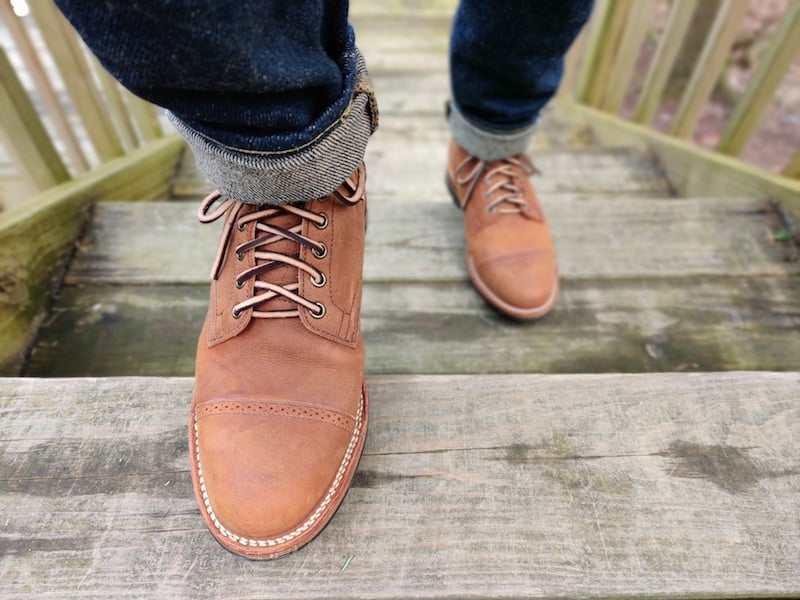
Whites vs Viberg’s Service Boots: Models and Make-Ups
First things first, there is a lot of variation within the Service Boot and MP lines themselves. Viberg accomplishes this through a cast of lasts, a standard collection, adventurous seasonal releases, a couple of construction options, and stockist-exclusives. White’s takes a slightly different approach by offering different models with distinct names, and allowing the customer to go semi-custom with configuration selections. In either case, the range is formidable.
Viberg
Viberg calls anything built with their 6” heritage pattern, which features a gracefully curved one-piece external backstay and open lacing, a Service Boot. The important thing to note is that the individual choices are being made by a stockist or Viberg itself: one-offs are not in the ordinary course of Viberg’s business. Because of this, prospective buyers need to pay attention to the different details from one make-up to the next.
The most fundamental differences across Service Boots come from the shapes themselves. There are no less than six unique lasts that Viberg will build a Service Boot on, and they range from the svelte 2020 anatomical last to their 310 last, a throwback to the boxy sprung-toe days. All lasts are now available in varying widths as well.
From there, the next differentiating factors are within the uppers. From reindeer to shell cordovan, Viberg is not shy when it comes to upper materials, though they tend to stick to classic earth-tones. Service Boot toes are available plain, capped, or perforated and capped (which they call Brogue Cap Toe or BCT), all of which are available mildly structured or unstructured. The cap-toes have three rows of stitching, while the BCTs have subtle broguing nestled between two rows of stitching. You will lace through either naked eyelets, or nickel or brass hardware, which can either be all eyelets or a combination of eyelets and speed hooks.
The soles are the last significant variables to consider. Viberg uses practically every outsole there is. Dainite is the most popular, but hardy leather, Ridgeway, Commando, Christy, and mini-ripple outsoles are commonly seen on Service Boots instead. Sole construction is either double-row stitchdown or traditional Goodyear welt.
[Shop the Viberg Service Boot here!]
White’s
The White’s MP line, in contrast to the Viberg Service Boot, is made up of a few distinct models. The Sherman (shown in the video above) sports a toe cap with four rows of stitching, the Stuart is the plain-toe, and the M1 name connotes a one-piece curved backstay, a la Viberg Service Boot. The Sherman and Stuart both have a two-piece external backstay. Additionally, you can get your Sherman or M1 with a perforated cap-toe that has three rows of stitching and slightly more pronounced brogue holes than on their Viberg counterparts. Much like with Viberg, you have a choice of structured or unstructured toe puffs. All MPs can be made with brass, black, or nickel eyelets, and speed-hooks can be added into the mix as well.
Regarding uppers, you have choices, but most are fairly ubiquitous. The MP is available in all of the classic colors of Horween’s Chromexcel (“CXL”), horsehide (even shell cordovan on occasion), and waxed flesh. White’s will also cut MP uppers from the oil-tanned leathers used on their more work-focused boots, either grain-out or flesh-out.
There isn’t much more, however, that changes from MP to MP. You only have two last choices, so most MPs look like each other in profile and silhouette. Outsole options are also admittedly limited, as you can only choose between Dainite or a shallow lug half-sole. You can choose to have embossing on the collar of the shaft, or leave it sterile. Oh, and all MPs are made the same way, no construction options for you here.
The Winner
This comes down to math: There are exponentially greater unique configurations of Viberg Service Boot out there than White’s MP. While the Service Boot is technically just one model, it encompasses a huge range of versatility in both form and function. If you want something specifically for the suit-and-tie office, a Goodyear welted shell cordovan Service Boot with leather bend outsoles and blind eyelets is out there somewhere with your name on it. If you want a dedicated Service Boot for adventuring on truly rough terrain, look for kudu uppers stitched through to an aggressive full Commando outsole. Neither of these combinations would be available on an MP.
[Related: Are Vibergs Worth It? The Ultimate Exploration of the Service Boot]
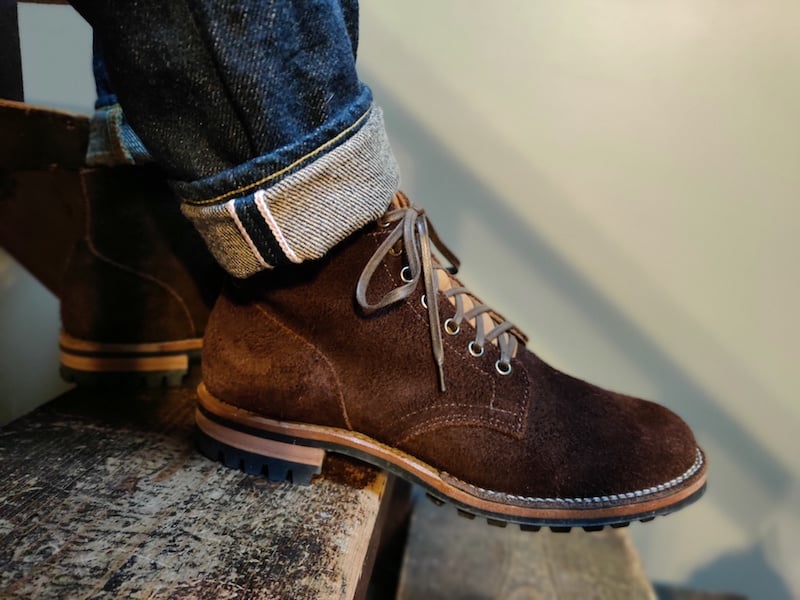
Whites vs Viberg’s Service Boots: Construction
You don’t want to see sub-par construction when spending this much of your hard-earned crypto gains, and you should be able to know with a high degree of certainty that your new boots will be reliable, tough, and of heirloom quality. Rest assured, Service Boots and MPs are all made to the same old-school standards of toughness and longevity (an appropriate nod to the original intent of their ancestors).
These are serious boots, svelte profiles notwithstanding. They weigh significantly more than any 6” boot from the likes of Thursday, Allen Edmonds, or Alden. The uppers of any Service Boot or MP are cut from heavyweight hides and the midsoles are thick slabs of veg-tan leather. MPs and Service Boots both give you confidence in spades, not just from the immediate boost to the wearer’s appearance, but from the heft and solidity on-foot. Let’s look inside to see how the different construction methods contribute to the tanky experience of donning them.
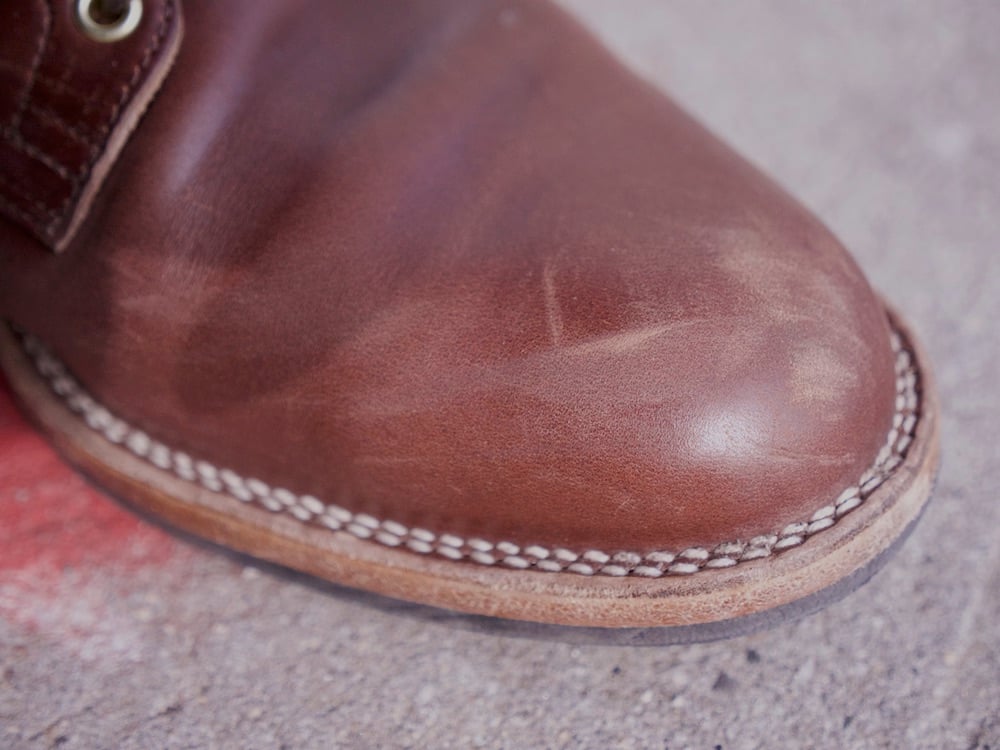
Viberg
You actually have a choice when it comes to the method of Viberg Service Boot construction. Basically, you can choose from Goodyear-welt (“GYW”) or stitchdown. In either case, you get leather insoles, leather midsoles, leather heel counters, brass nails, thick (typically 6oz.) lined uppers, and a shank. Every Service Boot has the heft we’re talking about here, regardless of construction method.
Viberg is most famous for its stitchdown Service Boots, which proudly sport a double row of stitching across the vamp. Upon lasting the upper partially by hand, the vamp is sliced and turned out over the midsole before being stitched together. From there, the outsole is attached, and everything is stitched through, creating the two rows of thread along the midsole that helped launch Viberg to the top of the production boot world. Aside from being visually distinctive, this method is quite water resistant, as there is no crevice between the upper and midsole, a common spot where moisture can get trapped.
GYW Service Boots are available with 270-degree, or 360-degree welts, and those welts can be either flat or split-reverse. Viberg claims that adding a welt to their Service Boots allows them to use a broader range of materials, and that the GYW method leads to a more refined article in general. Visually, GYW Service Boots do have ever-so-slightly more graceful lines, and the silhouettes across different make-ups seems to be more consistent than across stitchdown builds, likely attributable to being fully lasted by machine. Welt stitching is as attractive and well-executed as any other GYW boot in this price range. That is to say, this is traditional stuff, and the water resistance, stiffness, and aesthetic are as you would expect from higher-end GYW construction.
[Related: Stitchdown vs Goodyear Welt Comparison]
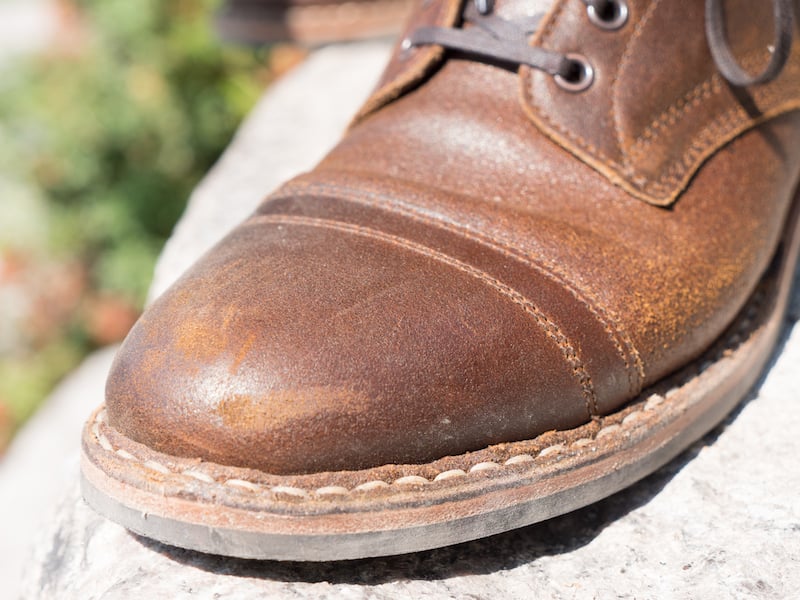
White’s
All White’s MPs are made using a form of stitchdown known as rolled welt construction. This method involves rolling the upper back onto itself before hand-stitching it to the insole, effectively making MPs hand-welted boots without the welt. The resulting flap of the vamp is folded back out over the midsole and trimmed before everything gets machine-stitched together. As the vamp is indeed stitched down directly through the midsole and outsole, this method qualifies as a type of stitchdown, albeit markedly different from Viberg’s approach. That does, however, mean these are as water resistant as stitchdown Vibergs.
Rolled welt construction, as executed by White’s, leads to an interesting look. At a glance, you would be forgiven for thinking these were GYW due to the single row of stitching running 270 degrees around the front of the foot. Upon closer inspection, you’ll notice that the same leather of the upper is indeed pulled over the front half of the welt, no wait, that’s the midsole. And the leather of the vamp is tucked under the forefoot, but then puffs back out before being stitched. It’s subtle, but it isn’t boring.
White’s MPs are also rather special by nature of how much leather is stuffed into these boots. The insoles and midsoles are very thick leather, and instead of a steel shank, White’s builds up the arch with several layers of skived veg-tan leather. All MPs are fully leather lined, even if you go with an unstructured toe. If you’ve ever handled a traditional leather bag, you know that leather itself is surprisingly heavy. There’s a lot of leather here, and you can feel it in the pendulum swing of your step.
[Related: Goodyear welt vs Handwelt Comparison]
The Winner
A tough call, but the scales tip in favor of White’s for this round. The case for Viberg lies in the option to go with GYW or stitchdown, and that in either case, you get a more refined aesthetic when compared to the MP. While it’s nice to have options, looks are subjective, and you can’t deny the amount of hand-work that goes into a pair of MPs. Viberg Service Boots are partially hand-lasted at best, but all MPs are lasted, welted, and bottomed by hand. Add in the all-leather shank, and I lean towards the MP here.
White’s vs Viberg: Finishing and Quality Control
By finishing, I mean the execution of the details. By quality control, I mean the internal standards at play in deciding what should or shouldn’t go out the door. In any event, all Service Boots and MPs are going to be excellent boots. If you like the look and feel, and you just want to get out there and stomp around in them, you can likely skip this entire section. But for many, we’re talking about a large amount of money, and things like finishing and QC are part of the cost-benefit analysis. For those folks, read on.
Viberg
Viberg does quite well for themselves in the finishing department. Stitching on the uppers is dense and clean. The lines are parallel where they should be, and intersect where you expect them to. You can tell they pay a fair amount of attention to this part of the process. The midsole is beveled to gradually narrow out towards the heel, very nice. Edge stain is uniform and precisely applied. All sanding is done with care, and sole edges are smooth and polished.
Quality control is also rather good across Service Boots. It is very rare to see excess glue inside or out, and all nails are solidly clinched so as to be imperceptible when worn. There are very few loose threads on Viberg uppers. On the subject of uppers, Viberg clicking is some of the best in the business. This is especially apparent on leathers that are notorious for having looser grain structure by nature, such as Horween Chromexcel. Panels such as toe-caps are symmetrically applied, and any broguing is pleasantly centered. It is difficult to get a bad pair of Vibergs.
White’s
Before I seemingly take a bite out of White’s, I want to reiterate that these folks are predominantly in the business of making true work boots fully intended for hard use, generally out in the field. They don’t have a separate factory for “fancy” boots, per se, so commentary in this section should be taken with a grain of salt. With that out of the way, MPs are finished deftly, but quickly. The stitch density is on the wider side, both along the sole and throughout the uppers. The stitchdown flange of the vamp is trimmed with a flick of the wrist, and it shows. The transition of the beveling on the midsole tends to be rough, and you’ll find some edge stain bleeding onto the uppers (and your horsehair brush) more often than not.
White’s quality control standards are similarly nothing to write home about. Loose, uneven threads are a common sight on MP uppers, as are nails under the footbed that aren’t fully clinched. Sole stitching tends to be unevenly spaced in density, and is sometimes pulled with such tension that a stitch will disappear into the vamp here or there. MPs in Chromexcel are prone to exhibiting dramatic creasing, often on different panels on each boot. Heel stacks are known to be ground a little too aggressively, and uneven skiving has led many new owners to search for a cure to break-in pain where panels meet on the interior of the boot. There are many stories of orders being fulfilled in the wrong width or even the wrong size altogether.
I am not insinuating that you can’t get a perfect pair of MPs from White’s. Sometimes, they knock it out of the park, and you can clearly see that everyone in the shop was on their game that day. Some of the best Chromexcel clicking I’ve ever seen has been on White’s MPs. There are pairs out there with absolutely perfect sole stitching. It’s just that inconsistency seems to be the name of the game here.
[Related: The 14 Best American Made Boots You Can Buy]
The Winner
This is where Viberg shines in comparison to White’s, a clear win for the Service Boot in this category. It is apparent that Viberg spends more time on finishing, and has stricter quality control standards. The Service Boot is thus a more refined boot than the MP, and is the far better choice for the folks out there who plan on busting out the macro lens upon unboxing.
The caveat would be that fundamental flaws are rare on MPs, so everything here is nitpicking to some degree. And at the end of the day, if there are any glaring issues, both White’s and Viberg will always make it right. Also, personal preference may dictate what matters to you. For example, tighter stitch density is more difficult to execute to a high level, but can actually diminish the longevity of the material being stitched (due simply to more holes being poked into it). Still, I have to give it to Viberg.
White’s vs Viberg: Last and Aesthetics
The last and aesthetic discussion is being consolidated here because they tend to move in lockstep with each other. The last determines the shape of the article, and the shape is one of the most important elements of a design. Apart from that, lasts are also the main contributor to fit and comfort. It must also be considered that the look of a boot is heavily influenced by factors beyond the last, such as the patterns themselves. While individual conclusions may be subjective, here’s an objective break-down of the lasts and aesthetics of the Service Boot vs the MP.
Viberg
You want lasts? Viberg’s got lasts. There are no less than six unique lasts that Viberg may build a Service Boot on, more if you count modified or previous iterations. Each last has its own look and feel, and are available in different widths (finally!) The quintessential Service Boot last is the 2030. It has gentle curves in all the right places. It starts off by tightly hugging the heel and instep, then it swoops out to a generous forefoot, only to taper back in towards the toe. This creates a tasteful almond shape that is almost universally adored. The other available lasts are similarly refined, with generally svelte silhouettes that still somehow avoid looking formal.
The Viberg Service Boot, especially on the 2030 last, has cemented its status as an icon in the boot world. The silhouette could be a bona fide trademark, and if a Service Boot is what you have in your mind’s eye, it’s highly likely that nothing else will do. “Trim” is a good word for the general aesthetic here. Viberg’s patterns are designed specifically to fit taut around the instep and shaft, with a quick taper to the heel cup and a subtle curve to the eyelet stay. The eyelets themselves are tactfully positioned to pull the uppers into perfect shape when the laces are tightened. This proves true all the way up the shaft, and as a result, Service Boots rarely bunch up when walking or crouched. In conjunction with excellent clicking, this is the epitome of the refined military service boot.
White’s
White’s will build the MP on one of two lasts: the MP/Barrie last, or the 55 Arch-Ease last through Baker’s Boots. The 55 last is a generous last with pronounced stacked-leather arch support. It is roomy through the instep, heel, and forefoot, but appropriately snug at the waist. This last sports a rounded toe with an extremely mild bump. While available, 55-lasted MPs are relatively rare in the wild.
The far more popular choice is the Barrie last. For those familiar with Alden’s Barrie last, try to forget about it for a minute. White’s Barrie does not equal Alden’s Barrie. Not only is the geometry dramatically different, but the sizing is also different. Due to the understandable confusion, White’s has recently renamed this last to the “MP” last. The MP last features a narrow/slim forefoot, with a generous heel and instep. It isn’t as voluptuous and curvy as, say, Viberg’s 2030 last, but it has a distinctively tough look. Boots built on this last are notoriously difficult to photograph, but nearly all owners love the way they look in person.
The MP last is not exactly what I would call refined, and the patterns tend to favor people with higher insteps and thicker ankles/calves, and feature a bulge to the eyelet stays to accommodate that. They look better when they’re stretched to form, rather than pulled to form, and it definitely helps to have thicker feet. If you have lower volume feet and skinny ankles, you can still absolutely enjoy a pair of MPs, you just might have to deal with unsightly (and usually asymmetrical) bunching of the uppers at the eyelet stays, or be forced to compensate with an insert or thicker socks.
The Winner
Another win for Viberg. There are so many options for Service Boot lasts, each with their own character. The 2030 is notably one of the most recognizable shapes in the boot world, and with good reason. The profile is simultaneously gentle yet rugged. Every curve is gradual, and it just makes visual sense. The White’s MP built on the MP last is also becoming an icon in its own right. Where the Service Boot feels like it wants to depart from its humble roots, the MP seems to embrace them. Ruggedness is embodied in the MP, down to the shape, and it’s a great one if you ask me. Ultimately, it has to be acknowledged that the 2030 last started the revolution, and there are simply more last choices with Viberg.
White’s vs Viberg :Fit & Comfort
If it isn’t already apparent, you can’t go wrong with any Service Boot or MP. The same applies to fit and comfort. Whether you scour Reddit or become pen pals with a customer service representative, you can figure out your size and preferred last in either boot. If they fit, they will eventually become comfortable, I promise. But here are the key differences.
Viberg
The long and skinny is, there is a last and size combination of Viberg Service Boot that will fit pretty much anyone out there, provided you have two similarly sized feet. With newly-added widths, and the palette of lasts available, it is nearly impossible that there is no Service Boot for you. (Note that this wasn’t the case when we first reviewed Viberg, when only the wider 2030 last was available on the Service Boot.) For these same reasons, however, it can be a chore to try and figure out your perfect size on your own, and it is highly recommended that you consult with your preferred stockist, or Viberg themselves. The proper fit should feel like a nice hug, especially around the heel, secure but not suffocating.
Once you get the last/size down, comfort comes from day one. A properly fitting Service Boot feels like a tailored suit, and though the construction is rock-solid, break-in is minimal and generally limited to the softening of the outsoles. As previously noted, these are more of a lace-to-fit design, suitable for feet of all volumes, and you shouldn’t ever force yourself to break in an improperly sized pair of Service Boots. Arch support is minimal, but the heel pad is nicely cushioned, and has a built-in arch ramp that does provide some additional support. These are comfy, period.
White’s
With the MP, you will likely have to take the approach of getting as close to perfect as you can through sizing and last selection, and then the rest comes down to breaking in all that leather. To that point, break-in can be a serious task with the MP. With either last, you may experience “White’s bite”, which is a pinching that occurs at the instep until the tongues and the rest of the upper relax. Then there’s the “ladder rung” effect that feels like standing barefoot on a ladder due to the pronounced leather arch stack, even on the milder MP last.
Once broken in, owners swear by the comfort, and I have to agree. The instep bite goes away, and the arch support and footbed conform to your feet eventually. There’s something special about the way White’s boots break in, and they really do end up feeling like custom orthotics. If you don’t have White’s bite going on, and your arches were made for Birkenstocks, then you might be one of the lucky few that can enjoy absolute comfort from the first wear.
 The Winner
The Winner
Theoretically, the win should go to the Service Boot in light of the sheer number of last/size/width combinations that are possible. But if you can’t tell already, I’m going with my heart and giving this one to the MP. There is an extra chunk of leather under the foot with MPs when compared to Service Boots, and in the long run, a fully broken-in pair of White’s is a thing of joy.
White’s vs Viberg: Value
No matter who you are, these are not inexpensive boots by any stretch of the imagination. You are looking at roughly $590USD to get into a pair of MPs, and at least $670USD for a pair of the most basic Service Boots. Depending on the upper material (think cordovan), both prices can shoot into the four-figure range. Sure, they are in the same realm, but the 80 dollar difference between the White’s and Vibergs can mean a lot to you depending on what your meme-stock portfolio looks like.
Viberg
The Vibergs cost a bit more, and for that, you get a more carefully made boot with better clicking, finishing, and QC. You also get to represent to the world that you’re a proud owner of a pair of Viberg Service Boots, certainly a badge of some kind of honor somewhere. The full asking price is justified by the quality of the article, but at the same time, they are not likely to be given a bang-for-buck award any time soon. For all intents and purposes, all Service Boots are off the shelf, and are mostly constructed by machine. Still, they’re really really good.
Though the pandemic threw a wrench in the gears, Viberg’s regular sample sales are a great opportunity to dial up the value if you can get yourself into an event or if you have access to a trustworthy proxy. Otherwise, sales are rare and infrequent, and when they do pop up, the discounts generally don’t run too deep.
White’s
The White’s, on the other hand, save you almost a hundred bucks over the Vibergs, and the only real sacrifice is in a little bit of care and attention to detail. It feels like for every minute spent on a pair of Service Boots, White’s spends 40 seconds on their MPs. You can’t help but wonder what would happen if White’s decided to spend that full minute as well. But there’s a consistency to the inconsistency that ends up feeling more charming than it does ugly.
For your money, you get absolute leather tanks that stand alone as being the only relatively sleek option out there that offers these levels of arch support. The crucial construction steps are done by hand, and White’s really doesn’t know what it means to skimp on the leather. You can go the made-to-order route and squeeze some extra value from configuring your boots to a degree (though you should also do a time-is-money calculation regarding the wait).
Things get really interesting when you look up deals on MPs. White’s has their own eBay store where they put up seconds, returns, or mis-sized builds at steep discounts. White’s also run several seasonal sales throughout the year on their website, with discounts of as much as 30% off brand-new first run MPs. Retailers also tend to extend their sales to apply to White’s MPs as a matter of course. If you’re a bit patient, you can generally find MPs under 500 bucks, at which point they become a bargain.
The Winner
From a pure value perspective, you get what you expect with Viberg for $670+, but it’s kind of surprising what goes into a pair of MPs at $590. Being hand-welted, hand-bottomed, and hand-lasted at this price is an amazing feat. Sure, some costs are cut when it comes to finishing or QC, but no expense is spared when it comes to the raw ingredients and fundamental construction processes. The White’s MP is the better value at full price, and on sale, they’re absolutely a killer deal.
Overall Winner: Viberg
The Viberg Service Boot affirms its legendary status with a win over the White’s MP.
There is an eye-watering number of unique Service Boot make-ups representing an abundance of options in last and sizing, whereas White’s MPs are much more limited in variation. Service Boots are impeccably made, and the attention to detail is apparent. Every stitch seems deliberate, each cut precise. Hell, even the packaging exudes a premium feel with the individual cloth bags, signed note, extra laces, and jar of conditioner. White’s MPs sometimes feel slapped together, and they ship out in a heavy cardboard box with plastic shoe bags and a receipt, (though they do give you extra laces as well). Every step is executed to a slightly higher degree on the Vibergs when compared to the White’s.
Viberg Service Boots may be objectively better finished to tighter tolerances, and Viberg does win this comparison, but it isn’t a sweep. There are undoubtedly tons of people who will prefer the MP over the Service Boot for any variety of valid reasons, value being chief among them. They also feel different, almost rougher than the Service Boot, but in an endearing kind of way. For some, the finishing imperfections are inherent to a hand-made good, and a reminder of the individuals who built the boots in Spokane. The wider stitch density when compared to the Service Boot may actually give the MP a longer lifespan. And if you want that beefy arch support without having to stuff an insert in your boots, you have to go with White’s.
All things considered, Viberg has managed to maintain an aura of exclusivity around their products, and that only adds to the specialness of owning a pair of Service Boots. They somehow amount to more than the sum of their parts, even though the parts are already top-notch. While Vibergs are admittedly expensive, they’re worth it. They also take the crown today.

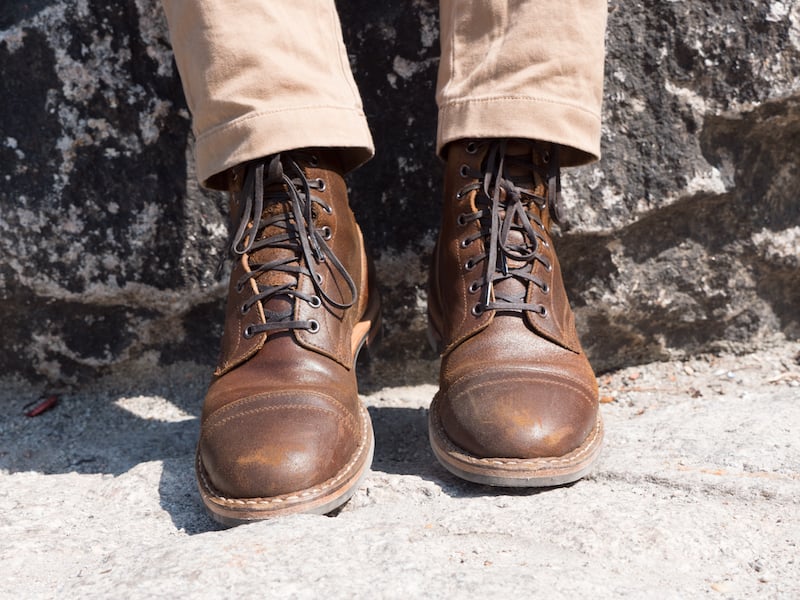
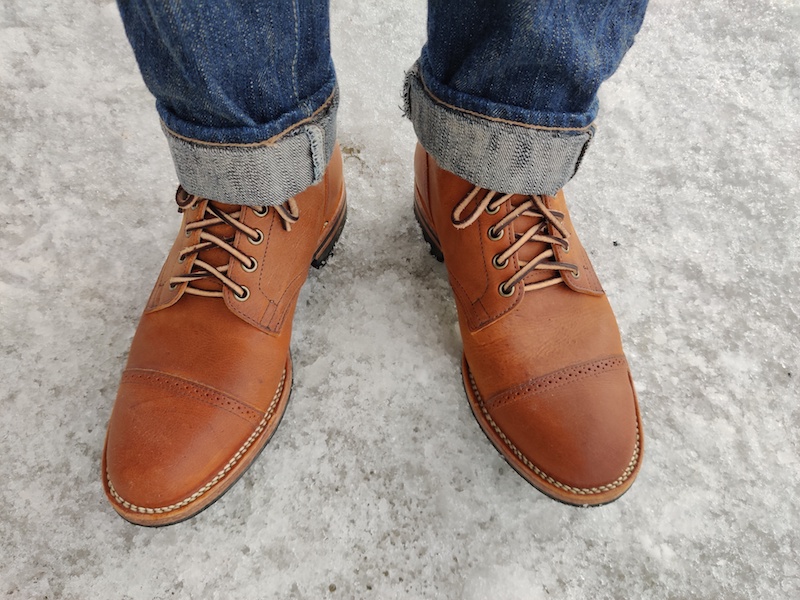
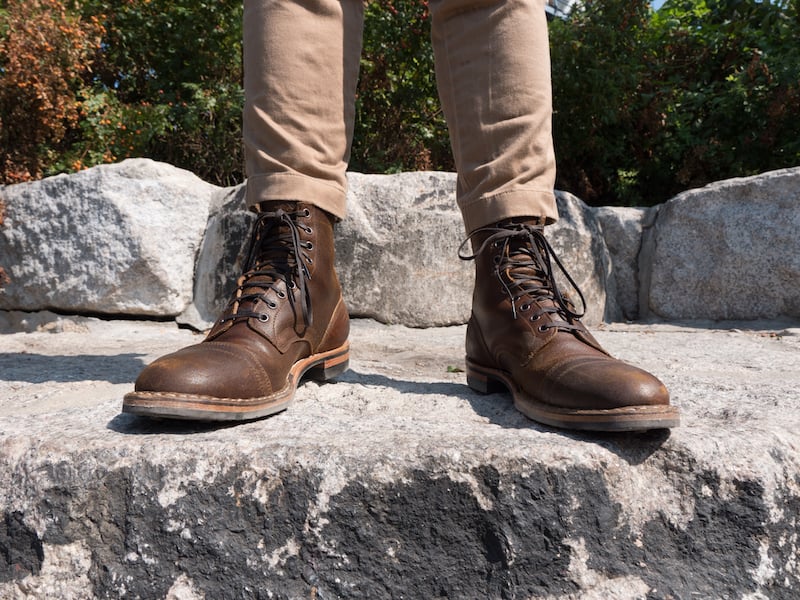
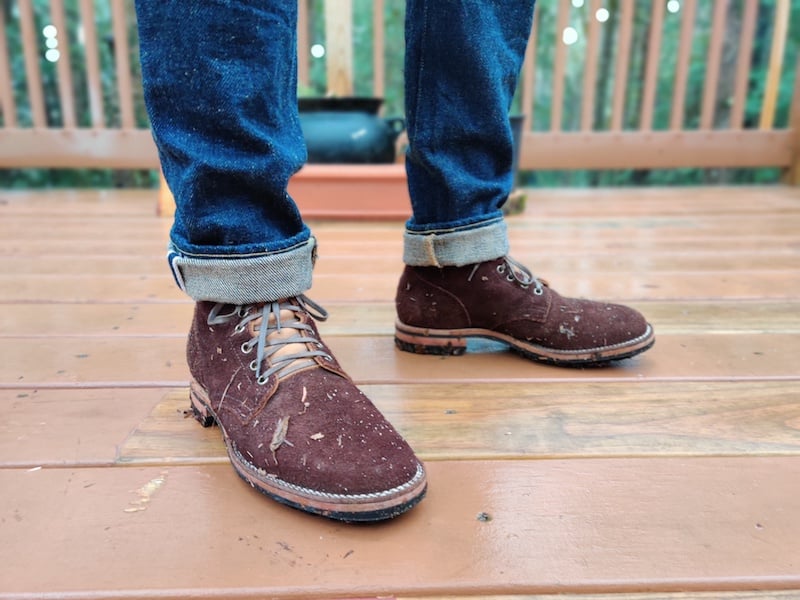
 The Winner
The Winner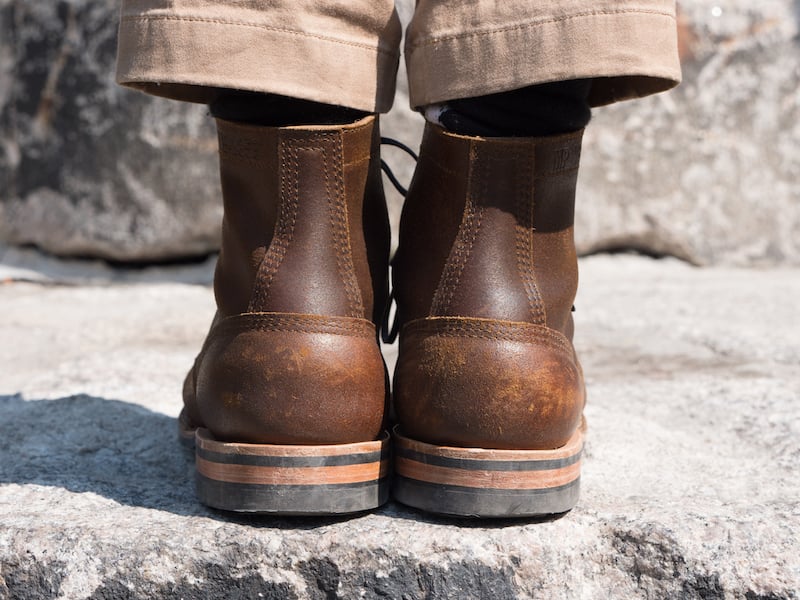
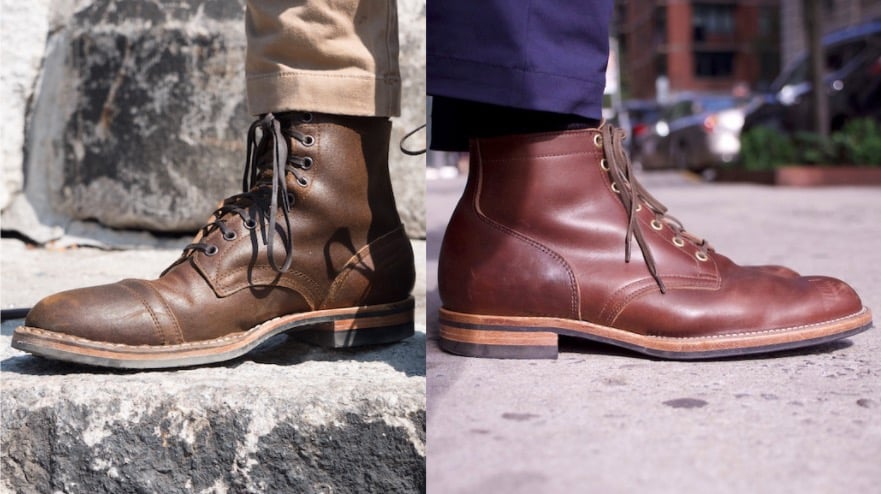

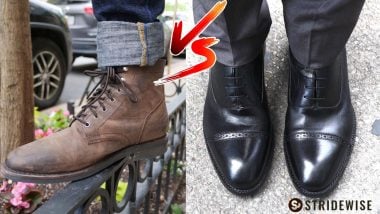
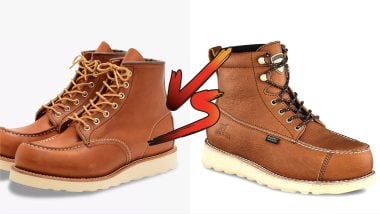
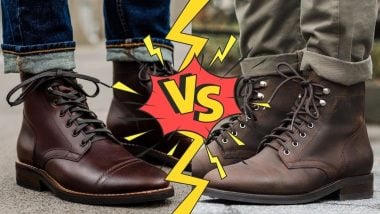


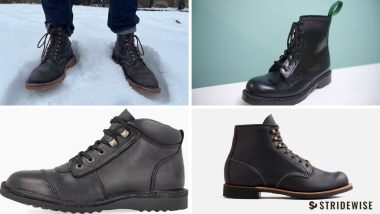


Join the Discussion